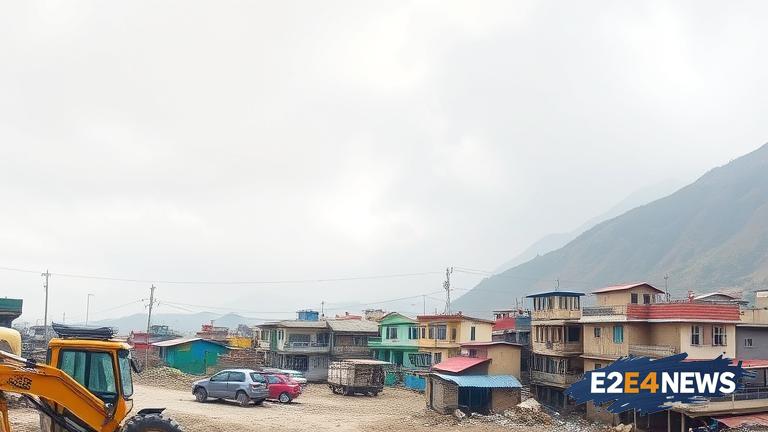The recent disaster in Mandi, Himachal Pradesh, has brought to light the issue of unplanned development in the region. The disaster, which occurred due to a combination of heavy rainfall and landslides, has resulted in significant loss of life and property. According to experts, the primary cause of the disaster is the unplanned development in the region, which has led to the destruction of natural habitats and the disruption of natural water flows. The construction of buildings and roads without proper planning and consideration for the environment has increased the risk of landslides and floods in the region. Furthermore, the lack of effective waste management and the dumping of waste in rivers and streams have also contributed to the disaster. The Himachal Pradesh government has been criticized for its failure to implement effective measures to prevent such disasters. The government has been accused of prioritizing development over environmental concerns, which has led to the degradation of the environment and the loss of biodiversity. The disaster has also highlighted the need for sustainable development practices in the region. The use of sustainable materials and techniques, such as eco-friendly construction and renewable energy, can help reduce the risk of disasters and promote environmental conservation. Additionally, the implementation of effective waste management systems and the protection of natural habitats can also help mitigate the effects of disasters. The local community has also been affected by the disaster, with many residents losing their homes and livelihoods. The government has announced plans to provide relief and compensation to the affected families, but more needs to be done to address the root causes of the disaster. The disaster has also raised concerns about the impact of climate change on the region. Rising temperatures and changing weather patterns have increased the risk of disasters, and it is essential to take measures to mitigate these effects. The government and local authorities must work together to implement effective measures to prevent such disasters in the future. This includes conducting regular risk assessments, implementing early warning systems, and promoting sustainable development practices. The disaster has also highlighted the need for public awareness and education about disaster risk reduction and management. The local community must be informed about the risks and consequences of disasters and must be equipped with the knowledge and skills to respond to such events. In conclusion, the Mandi disaster is a wake-up call for the government and local authorities to take immediate action to address the issue of unplanned development in Himachal Pradesh. It is essential to prioritize environmental concerns and promote sustainable development practices to reduce the risk of disasters and promote environmental conservation. The government must also work to implement effective measures to prevent such disasters in the future and provide relief and compensation to the affected families.
